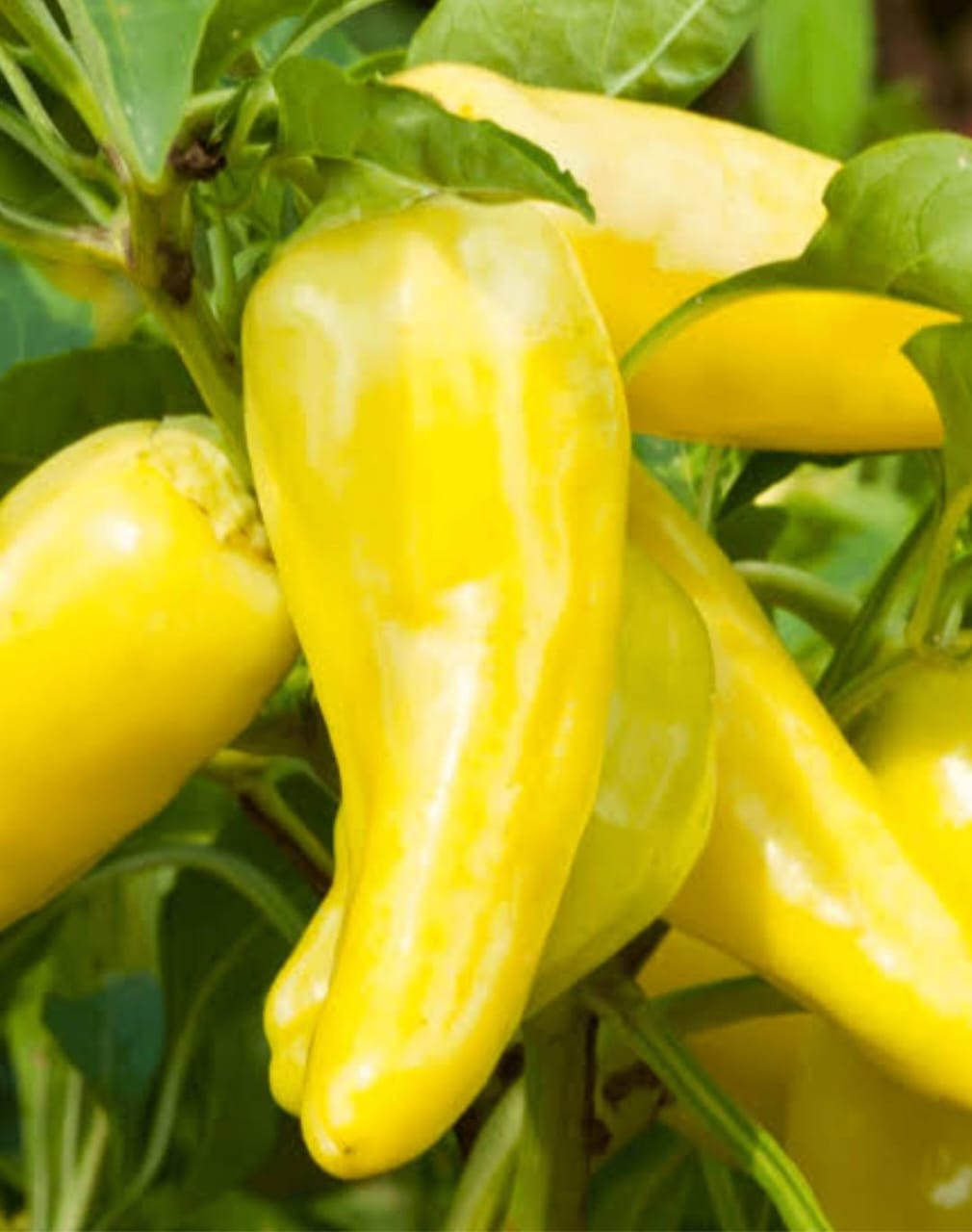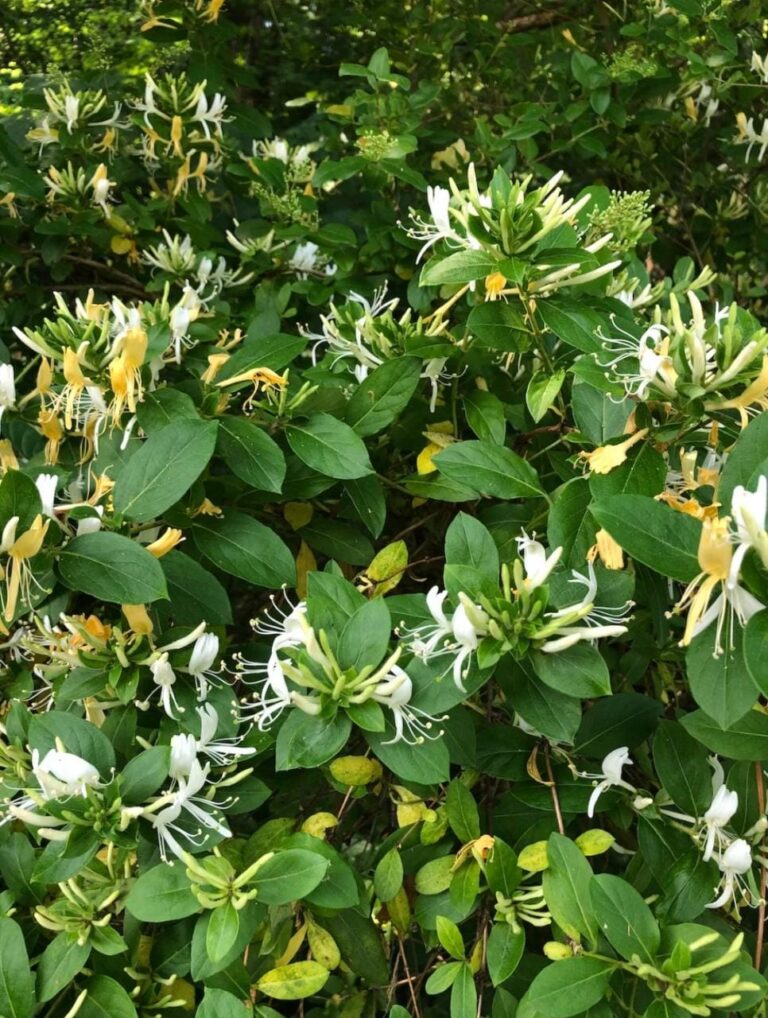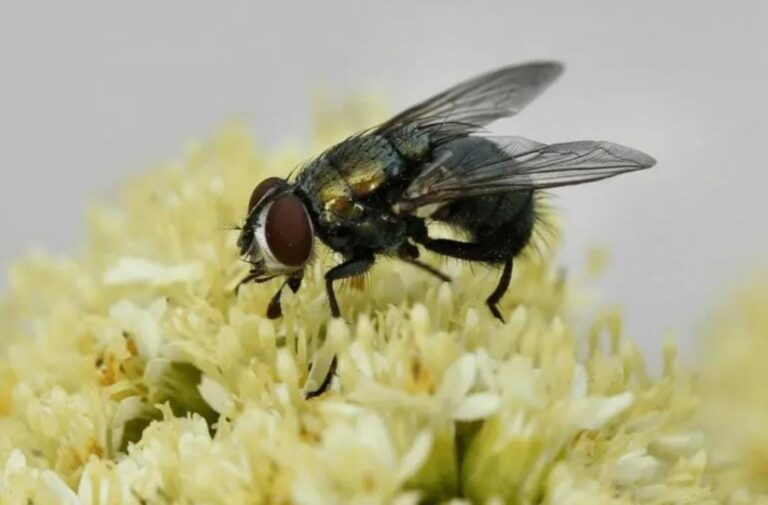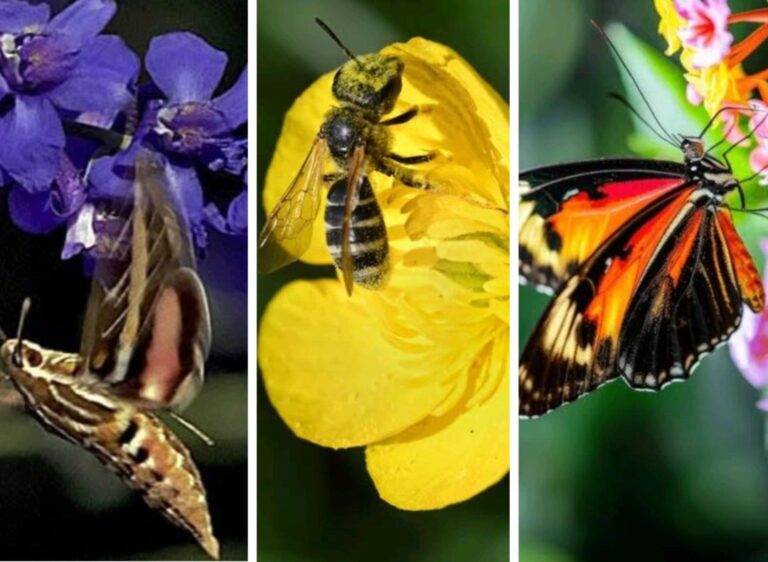Banana Peppers 101: From Seed to Plate with Exclusive Insights
Introduction
Banana peppers, a delightful variety of the Capsicum annuum plant, are celebrated for their vibrant, tangy flavor coupled with a gentle warmth that makes them a favorite among pepper enthusiasts. These peppers are notable not only for their culinary appeal but also for their adaptability in various growing conditions, making them an important subject in both scientific research and agricultural practices.
This blog will delve into the fascinating scientific properties of banana peppers, offering insights into their ideal growing practices that ensure optimal yield. We will explore the impressive nutritional benefits they provide, packed with vitamins and antioxidants that contribute to a healthy diet. Additionally, we will examine their unique phytochemical composition, which gives them their distinct taste and health benefits.
Furthermore, we will discuss natural resilience against pests and diseases, highlighting the agricultural techniques that can enhance their growth and sustainability. Finally, we will consider the global agricultural significance of banana peppers, underscoring their role in various cuisines and economies around the world. Join us as we uncover the remarkable journey of this versatile pepper from farm to table.
Taxonomy and Botanical Characteristics
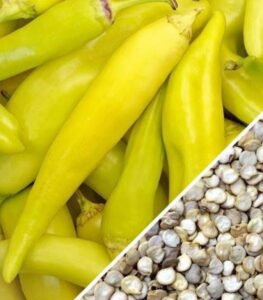
Banana peppers belong to the Solanaceae family, which is commonly known as the nightshade family. This diverse family also includes well-known plants such as tomatoes, potatoes, and eggplants. The scientific classification of banana peppers is as follows: they are classified under the kingdom Plantae, within the clade Angiosperms, followed by the order Solanales, and the family Solanaceae. This classification highlights the banana pepper’s relationship to other economically and nutritionally significant crops, which are staple foods in many cultures worldwide
- Kingdom: Plantae
- Order: Solanales
- Family: Solanaceae
- Genus: Capsicum
- Species: Capsicum annuum
- Cultivar group: Banana pepper (also known as yellow wax pepper)
Banana peppers, known for their distinctive shape and vibrant colors, typically reach 2 to 3 inches and exhibit a curved form reminiscent of bananas, which is the origin of their name. These peppers are primarily yellow when fully mature, but as they ripen, they can transition to shades of orange or red, adding to their visual appeal. Their skin is notably thin and glossy, giving them a fresh and inviting look, while their flesh is relatively meaty, making them ideal for various culinary applications. With a mild, slightly sweet flavor, banana peppers are versatile in raw and cooked dishes, adding a delightful crunch and hint of heat.
Scoville Scale and Pungency
Banana peppers, classified within the Capsicum annuum species, are renowned for being among the mildest chili peppers available. Their Scoville Heat Units (SHU) typically range from 0 to 500, which is relatively low compared to many other pepper varieties. The Scoville scale is a measurement that quantifies the presence of capsaicinoids, primarily capsaicin, the compound responsible for the characteristic heat associated with chili peppers.
What sets banana peppers apart is their unique flavor profile, characterized by a subtle, lingering warmth rather than an intense spiciness. This gentle heat results from their very low concentration of capsaicin, allowing them to add a pleasant kick without being overwhelming. As a result, banana peppers are an excellent choice for consumers who prefer milder flavors or who may be sensitive to spicy foods.
They are often used in various culinary applications, including salads, sandwiches, pizzas, and even as pickled toppings. Their versatility and mild flavor make them a favorite among those looking to enhance dishes with just a touch of warmth while maintaining a balanced taste. While banana peppers have very little capsaicin, their low concentration allows for a delicate, lingering warmth without overwhelming heat. This feature makes them a good choice for consumers sensitive to spicy foods or for dishes that require mild heat.
Genetic Variation and Breeding
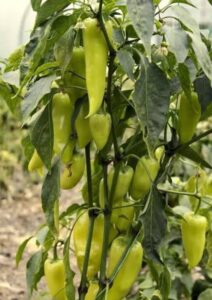
Modern breeding projects aim to improve banana peppers’ favorable qualities such as disease resistance, fruit uniformity, and shelf life. The genetic variety of Capsicum annuum enables focused breeding with both traditional and molecular approaches.
Marker-assisted selection (MAS) has proven a valuable tool in pepper breeding. Breeders can speed up selection by finding specific gene markers associated with qualities such as pungency and disease resistance. For example, genes such as Pun1 are associated with capsaicin synthesis, and manipulating them can aid in developing non-pungent cultivars.
Banana peppers are frequently hybridized to produce new lines that are resistant to diseases like bacterial leaf spot, which is caused by Xanthomonas campestris pv. vesicatoria, or to improve features such as fruit size and wall thickness.
Cultivation Requirements
1. Soil and pH
Banana pepper thrive best in well-drained, loamy soils rich in organic matter. This type of soil provides the ideal environment for their roots to grow and access essential nutrients. For optimal growth, it’s important to maintain a soil pH level between 6.0 and 6.8. If the soil is excessively acidic or alkaline, it can hinder the plant’s ability to absorb vital nutrients effectively, ultimately affecting the overall development and quality of the fruits produced. Ensuring the right soil balance is crucial for achieving a healthy and productive banana pepper crop.
2. Temperature and Light
These peppers thrive in warm climates, with optimal growth temperatures between 70°F and 85°F (21°C to 29°C). Being sensitive to frost, it’s crucial to wait until any potential frost has passed before planting them in your garden. These plants flourish in full sunlight, necessitating a minimum of 6 to 8 hours of direct sunlight each day to support healthy flowering and fruit development. For best results, ensure they have access to adequate water and well-drained soil, as these factors also significantly contribute to their overall health and productivity.
3. Watering and Nutrients
Maintaining consistent hydration for plants is crucial for their overall health and growth; however, it is equally important to avoid overwatering, which can lead to severe issues like root rot and fungal diseases. One effective method to ensure adequate moisture in the soil without saturating the vegetation is the use of a drip irrigation system. This system delivers water directly to the root zone, allowing for efficient water use and minimizing the risk of mold and mildew on the plant surfaces.
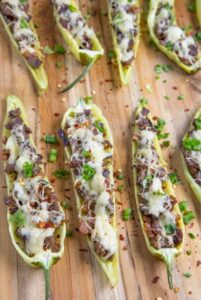
In addition to water, essential nutrients play a significant role in plant development. The primary macronutrients—nitrogen (N), phosphorus (P), and potassium (K)—are foundational for robust plant growth. Nitrogen is vital for leaf and stem development, phosphorus supports root and flower formation, and potassium is crucial for overall plant vitality and disease resistance. Alongside these macronutrients, micronutrients such as calcium and magnesium should not be overlooked, as they contribute to various physiological functions within the plant.
It is important to strike the right balance in fertilization, particularly with nitrogen. An excess of nitrogen can result in lush, green foliage at the cost of fruit production and overall plant vitality. Therefore, adopting a well-thought-out fertilization strategy that considers the specific needs of the plants will ensure healthy growth and optimal yields. Regular soil tests can help determine nutrient levels and deficiencies, guiding the right fertilization approach.
Growth Stages and Phenology
The banana pepper plant goes through several essential growth stages, each contributing to its development and eventual fruit production:
1. Germination (7-10 days)
This initial stage begins when the seeds are planted in warm, moist soil. Optimal temperatures range between 70°F to 85°F (21°C to 29°C), as the seeds need warmth to activate their growth. Consistent moisture is crucial during this period; however, care must be taken to avoid waterlogged conditions, which can lead to seed rot.
2. Seedling Stage (2-4 weeks)
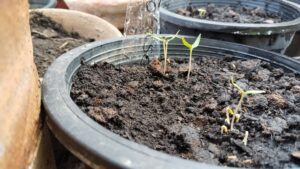
After germination, small cotyledons, or seed leaves, will emerge, providing the seedling with its first source of nourishment through photosynthesis. Following the cotyledons, true leaves start to branch out, indicating that the plant is establishing its ability to produce energy. This stage requires adequate light and moderate watering for healthy growth.
3. Vegetative Growth (4-6 weeks)
The banana pepper plant enters a vigorous growth phase where it develops a strong stem and an expanding network of branches and leaves. This stage is vital for establishing a robust plant structure that can support future fruit production. Adequate nutrients, particularly nitrogen, become increasingly important to promote strong leaf and stem development.
4. Flowering Stage (6-8 weeks)
During this stage, the plant produces delicate white flowers, which are crucial for reproduction. Wind and insect activity aid in the pollination process, which is essential for fruit set. Maintaining appropriate humidity and preventing excessive moisture can help avoid issues like fungal diseases that often occur during flowering.
5. Fruiting Stage (8-12 weeks)
Following successful pollination, the flowering stage transitions into fruit production. The small green fruits will begin to mature, gradually changing color as they ripen. First, they turn yellow, and if left on the plant longer, they can transition to a bright red color. This stage is not only exciting for growers but also critical since the flavor intensifies as the fruits ripen.
6. Harvesting (12-16 weeks)
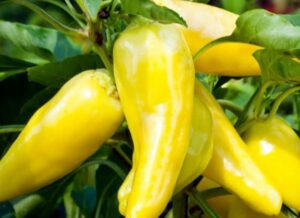
The ideal time for harvesting banana peppers is when they reach the yellow stage, which typically occurs around 12 weeks after planting. At this point, the fruits have developed a delightful texture and a mild, sweet flavor that is perfect for consumption. Harvesting at this stage ensures that the peppers are tender and flavorful, while allowing the possibility of leaving some on the plant to fully ripen to red for different taste profiles.
Pollination Biology
Although banana peppers are self-pollinating, cross-pollination can occur via insect vectors like bees. Each flower has both male (stamen) and female (carpel) reproductive organs. Pollination causes ovule fertilization, which leads to fruit set. In controlled circumstances, manual pollination can be used to increase fruit yield or maintain varietal integrity.
Nutritional Profile
Banana peppers are low in calories but high in important nutrients. A 100-gram serving includes:
- Calories: 27
- Carbohydrate: 6.2 grams
- Protein: 1 g
- Fiber: 1.5 grams
- Vitamin C: 100–150 percent of the recommended daily allowance (RDA)
- Vitamin B6: 15-20% of the RDA
- Folate, Potassium, and Manganese: Present in significant levels
The high vitamin C concentration promotes immunological function and collagen formation, while vitamin B6 aids neurotransmitter metabolism and cognitive growth.
Phytochemicals and Bioactive Compounds
Banana pepper include a variety of bioactive compounds:
1. Capsaicinoids
While present in small amounts, capsaicinoids such as capsaicin and dihydrocapsaicin contribute to mild heat and antioxidant activity.
2. Carotenoids
The yellow pigmentation is caused by carotenoids such as lutein, zeaxanthin, and beta-carotene, which operate as powerful antioxidants and promote eye health.
3. Flavanoids
Compounds like quercetin and luteolin have anti-inflammatory and antihypertensive properties.
4. Phenolic Acids
Ferulic acid and caffeic acid, for example, are free radical scavengers and antioxidants.
Common Pests and Diseases
Several pests and pathogens can damage the health and yield of banana peppers.
Pests
- Aphids feed on sap, transmitting viral infections and weakening plants
- Thrips cause silvering on leaves and transmit the Tomato Spotted Wilt Virus
- Pepper maggot larvae crawl through fruit and cause deterioration
- Spider mites cause stippling and defoliation
Diseases
- Anthracnose (Colletotrichum spp.) causes black, sunken sores on fruit
- Powdery mildew (Leveillula taurica) causes white fungal growth on leaves
- Bacterial leaf spot produces necrotic leaf patches and fruit defects
- Phytophthora blight is a soil-borne pathogen that produces wilt and stem rot
Sustainable production requires Integrated Pest Management (IPM) measures such as biological control agents, crop rotation, and resistant types.
Post-Harvest Handling
Post-harvest care is critical for sustaining fruit quality. To limit microbial entry, harvest banana peppers with a piece of the stem still attached. To reduce water loss and extend shelf life, they are stored at temperatures ranging from 7°C to 10°C (45°F to 50°F) and relative humidity levels of 90-95%.
Chilling injury can occur below 7°C, resulting in pitting, discoloration, and spoilage. Ethylene-sensitive banana peppers must be stored separately from ethylene-producing fruits such as apples and bananas.
Industrial and Culinary Applications
Banana peppers are commonly used for pickling, stuffing, and as sauces. Their mild flavor allows them to go nicely with cheese, meats, and salads. In industrial processing, they are frequently sliced and stored in brine or vinegar solutions, which are sometimes spiced with garlic or mustard seed.
Dehydrated banana peppers are utilized in spice blends, and fermentation has the potential to yield probiotic-rich goods. Their brilliant color and crisp texture make them popular in both the gourmet and fast food industries.
Global Cultivation and Trade
Banana peppers are extensively grown in countries with warm temperate and subtropical climates. The major producers are the United States, Mexico, Turkey, India, and China. Within the United States, California, Florida, and Texas lead in banana pepper production due to good weather and infrastructure.
The global commerce in banana peppers includes both fresh and processed varieties. Export markets require consistent quality, beautiful hue, and uniform size, thus, modern grading techniques and supply chain management are critical for profitability.
Environmental Considerations and Sustainability
Banana pepper farming, like other agricultural activities, requires environmental stewardship. Key sustainability indicators include:
- Water-efficient irrigation systems
- Use of organic fertilizers and compost
- Crop rotation maintains soil health
- Biological control reduces pesticide dependency
Climate change creates issues by altering growth zones, increasing insect pressure, and causing extreme weather events. Breeding climate-resilient cultivars and using agroecological methods are critical to future-proofing banana pepper agriculture.
Research Frontiers and Future Perspectives
Recent advancements in banana pepper research are focusing on several innovative areas. One significant aspect is genomic sequencing, which allows scientists to map the genetic makeup of banana peppers to aid in the selection of desirable traits, such as flavor, resilience, and nutritional value. This technique is crucial for developing new varieties that can thrive in various environmental conditions.

Additionally, researchers are exploring CRISPR-Cas9 genome editing technology, which offers precise modifications to the plant’s DNA. This method can help enhance specific characteristics, such as disease resistance or yield, making banana peppers more robust and suitable for the agricultural market.
Biofortification is another emerging area of interest, where scientists aim to increase the nutritional content of banana peppers by enhancing levels of essential vitamins and minerals. This aligns with global efforts to combat malnutrition and improve food security.
The development of functional foods is also a priority. Researchers are investigating how banana peppers can be incorporated into diets not just for their taste but also for their potential health benefits, such as antioxidant properties and anti-inflammatory effects.
Moreover, sensor-based precision agriculture is being utilized to optimize the conditions under which banana peppers are grown. By using sensors and data analysis, farmers can monitor soil conditions, moisture levels, and plant health, leading to more efficient and sustainable farming practices.
Lastly, there is a growing interest in studying the interactions between banana peppers’ bioactive compounds and the gut microbiome. Understanding how these compounds affect gut health could lead to new dietary recommendations and health products that capitalize on the benefits of consuming banana peppers.
Conclusion
Banana peppers may appear mild in taste and appearance, but their scientific and agricultural history is complex and deep. Banana peppers are a model crop that combines gastronomic delight and nutritional research, thanks to their taxonomic origins in Capsicum annuum and their antioxidant-rich biochemical profile. As agricultural practices change and consumer preferences shift toward health and sustainability, banana peppers are well positioned to remain a tasty, useful, and economically valuable component of global agriculture.

